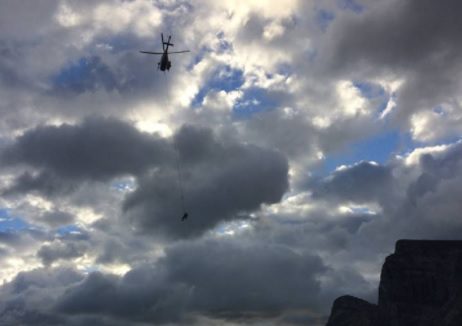Rescue and Death Numbers Are Up in Mountains

The numbers are in and they’re not good, 19 Bow Valley rescues in the past week. And that’s just the Bow Valley area. In that same time, over a dozen climbers have died in mountain ranges in Europe and the U.S.A.
Search and Rescue technicians and experienced backcountry users are scratching their heads as to why the number of rescues and deaths are up in 2017.
On Canada’s West Coast, North Shore Rescues have had a busy summer plucking unprepared scramblers off mountains. In the past few days, people were rescued after injuring their ankles.
“Crown Mountain’s a very difficult hike. It’s really a light mountaineering exercise to climb Crown Mountain, and it’s not really to be underestimated, and frankly these two underestimated the type of hike they were getting themselves into. They were not prepared,” North Shore Rescue search manager Doug Pope said.
This past weekend saw the fifth climber die on a technical fourteener in Colorado in only six weeks. Abbie Baroronian wrote on the Adventure Journal, “Since 2003, nine fatalities have occurred on Capitol Peak, raising questions about the uptick in deaths this summer. In conversation with the Denver Post, Sgt. Steindler brought up ‘peakbagging,’ specifically the hype around bagging Colorado’s fourteeners, as a possible culprit.”
In Europe, 10 climbers died this past weekend with countless rescues being reported. With an average 350 climbers on Mont Blanc every day, local officials have imposed new rules on what climbers have to bring.
There are many conversations on social media lately about the reasons why so many climbers are requiring rescues or ending up in serious accidents.
It seems to boil down to hikers, scramblers and climbers not being prepared for their objectives. Many folks blame social media. Don’t be fooled by Instagram images, they don’t tell the full story or the hard work that went into getting them.
10 Things to Keep in Mind in the Mountains
1. Start small and work up to bigger objectives.
2. Bring the right amount of gear/water/food/clothing.
3. Bring a map, study a topo and pre-plan your day.
4. Don’t rock climb beneath other parties.
5. The top is only half-way through your day.
6. As the days get shorter, time things appropriately.
7. If you see someone doing something stupid, call them out.
8. Have a plan B and C in case someone is on your route or you don’t have the time.
9. Don’t go alone unless you know the way up and down.
10. Remember that mountains are dangerous places.


